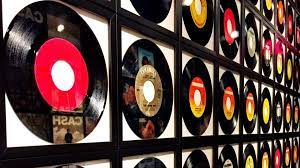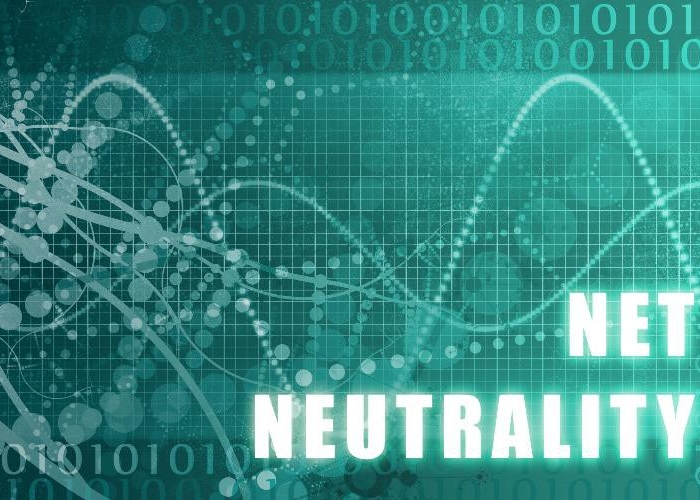In the 1940s Austrian economist Joseph Schumpeter first used the term “creative destruction” to describe the way technological progress – “while improving the lives of some it can simultaneously disrupt the lives of many.” Over the past 25 years we have witnessed this “creativity” becoming more disruptive than destructive in several industries. One can argue that the traditional manual wrist watch was the first victim, with the invention of smart watches. Later we saw tablets and kindles replacing conventional printed books, video streaming services replacing DVD – hence the video rental stores and to some extent, movie theaters, and probably the largest disruption of all – the what changes in the way we create and distribute audio has done to music industry. Here we first saw CD’s replacing the beloved vinyl in traditional record stores – leading to the disappearance of the record store; only to be replaced a few years later by digital sales platforms like Apple & Amazon music. This was hardly on a solid footing before music streaming services like Spotify, Pandora and Apple came into the game. These streaming services coupled with the mushrooming of thousands of streaming-based digital radio stations have completely transformed what used to be known as the “music industry”.

Throughout the years, we have always had some shift in the music industry about every ten years. This usually involves slight adjustment to the way we listen to music; or might be expansion and evolving of music genres. We seamlessly migrated from boom boxes, cassette tapes, to CDs with little fanfare. Similarly, we smoothly went from Ska to Rocksteady to Reggae or from new wave to pop, or R & B to Hip Hop without much effort. However, nothing in the last fifty years have occurred that is even remotely close to what has occurred in the music business the past ten years. Today the music business must constantly find ways to adapt to a market that relies on high speed internet for shopping, entertainment and information – a business in which technology has placed the consumer in charge.
Thomas Honeyman, a Los Angeles writer/musician argues that the old music industry that we knew and love is dead. He noted “we are standing in the ruins of a business built on Jets, Cristal, $18 CDs and million dollar recording budgets”. He continues – “we are in the middle of the greatest music industry disruption in 100 years…a fundamental shift has occurred – a shift that is driven by Millennials”. In simple language, what Honeyman is telling us is that the music business could be the first business wherein technology has handed both “the keys and the steering wheel” to the consumer. How the music industry responds might be the model for other industries like Automobile – which is about to face an earthquake-like disruption.
First, let’s examine some of the trends in the last ten years that have worked to “hand the keys” over to the consumer. Artist like Master P and JZ started something in the early 2000s that today has almost completely shifted the power form major labels to Independents. This has certainly led to much more progressive revenue splits and more opportunities for artists to earn income multiple sources, including streaming platforms.
For the artist, opportunities for alternative revenue sources are only limited by his/her team’s creativity. The Taylor Swift 2020 Pandemic project set the high bar for what can be achieved with out-of-the box thinking. In addition to releasing her new album via stream for her fans, she released a concert movie via Disney channel. Beyonce was first to unveil this concept with her “Lemonade” album in 2016. These projects provided endless opportunity for brand merchandising, exclusive access to tracks that did not make the album cut and much more. We can expect to see more of this in 2022- 2025. Hence the introduction of the new concept of “Visual Albums” could become a big part of the industry in the future. In addition, we can expect to see greater use of digital radio and social media outlets such as YouTube and TikTok as the dominant channels for discovering new music and new artist – presenting a real challenge to legacy radio.
Another area where we are seeing big changes is artist collaboration. In the past most collaboration were between artist of the same label and/or genre. However, we recently saw artist like Beyonce teaming up with Afro-beat artists Burna Boy, several hip hop and reggae collaborations, and most recently, reggae artist Beres Hammond and R & B act Charlie Wilson or dancehall act Ishawna and pop artist Ed Sheeran. Going forward, it appears that we will begin to see a lot more cross genre artist writing and performing together. Millennial are demanding fluidity in music genre and this will pose a tremendous challenge for legacy radio stations that are locked into traditional formatting.
The pandemic provided real opportunities for artists and bands to become more intimate with their fans (or Beres Hammond call them – his extended family) via live stream of full concert performances. Going forward, this could become a major part of the business model, not because we are expecting another pandemic, but mostly because consolidation in the ownership of concert venues over the past ten years and the monopolistic restrictions and exorbitant overhead charges that came with such consolidation was beginning for force the artists to seek alternative to extended tours even prior to the pandemic. In recent years many such tours have benefitted neither the promoters nor the artist.
Another area where we are seeing huge changes is what I call ‘the power of the label”. The concept of guerrilla marketing is not new in the music industry. We have seen walls and fences in tightly populated communities plastered with posters to announce the new independently produce mix-tape or album and to promote the struggling artist. They are usually very memorable and can produce significant impact. In the past this was done almost entirely in order to get the notice of a major label. Today that type of promotion combined with social media and other digital platforms is mostly done to consolidate the power of the artist within his/her own team.

Now the artist goes in to a major label with huge social media following and music already benefitting from limited release on digital platforms – simply looking to negotiate the best distribution deal. This is forcing monumental changes in the business models of record labels, because they have lost the control that use to enable them to put the artist on tour to “support the album” and recouping huge amount of revenue from the live concert, plus “tour support” income. The days of the artist being charged “$10 for a can of coke” are over and the contracts (sometimes as high as 80:20) that allowed for recouping of all advances plus tour support expenditure before the artist gets paid are now a “part history”.
On the production side of the industry, digitization have drastically reduced the size of the space need to produce music and hence the cost of production. Add to that the availability of plug-ins (free or for a small price) and today artists and producers can come up with all kinds of sophisticated sounds from moderately priced Digital Audio Workstations (DAW). Some of these DAW offers sound modules that are even beyond the ability of the best musicians. The growing trend from manufactures is to make the formerly complex operation of the typical 50 channel analog mixing board so easy in the digital space that almost anyone with the desire to produce has the same level of production capability available in a small space.
In addition, the technology is enabling a lot more sampling than we have seen in the past. We are seeing loops being ripped across genre, thus making some traditionally static genre almost unidentifiable. This has also enabled artists and producers to create multi-genre versions of the same song. The bottom line is this – as production technology advances, artists and producers are positioned to have more control than one could ever have imagined ten years ago.
On the consumer side of the equation, massive changes are also taking place. In the old legacy radio dominant space, program directors and music directors (sometimes with assistance from record labels, researchers, format labs and/or auditorium test) made the decision as to what the listeners heard. Today YouTube, TicTok, Spotify and the abundance of other sources have placed the listeners in the driver’s seat and they are demanding fluidity in genres. The music purchasing Millennials are in control and they know it. The research indicates that they care less about genres and more about the kind of music that complement their lifestyle. Platforms like Spotify and Pandora have made such research the driving force behind their playlists construction and overall programming.
These digital platforms along with others such as iHeart Radio, Apple and Amazon have developed a kind of algorithm which enables them to make listening recommendations to listeners based upon what they last listened to across multiple electronic devices. They are able to collect listening data from music apps, audio streaming services and on-line search engines and use such data to make recommendation of similar artists or songs to the user based upon his/her listening history. Here in the USA, more than 200 million listeners of music via Amazon Echo & Google Home can now voice command the creation of an individual playlist of just the artist are kind of music that the individual wishes to hear at that moment. This kind of algorithm has tremendous value in extending the Time Spent Listening (TSL) to the device. TSL is the new currency of the advertising world.
Disruption in any industry always comes with challenges and the music industry is certainly not exempted. In the middle of this disruptive storm three threats to the industry have surfaced. First, the beloved music stores where creators and producers could go to touch and listen to the instruments before purchasing are really struggling to stay in business. Going forward, they will have to innovate to stay in business. This might mean joining the many impersonal on-line sellers of instruments such as Amazon, Reverb and Sweetwater.
Another challenge to the industry is posed by the beloved Grammy Awards which for years have served to provide some level of “legitimacy” to artists. Some corporate circles believe that at the end of its current contact, CBS could walk away from airing the Grammys. The shows dwindling audience, plus multiple controversy over recent years have made the show’s brand somewhat a difficult sell. If the brand loses its present position on prime time network television, it will probably end up on a cable system with greatly reduced audience and financial value. In addition, perception of its cultural significance will be greatly reduced.
The final challenge and probably the most important one is the revenue model that has given value to both streaming and the independent artist. This model has a huge “flaw” in that it has “encouraged” the rise of a phenomenon call Streaming Farms – fraudsters taking advantage of the hole in the model to cash in. Streaming farms are set up to take advantage of platforms like Spotify. Scammers (individuals who commit fraud) set up robots or “digital workers” to artificially inflate social media metrics for listening to music. Their specific job is to artificially inflate the number of listeners to a song. They are paid on a per listener basis. These “farms” utilize multiple web servers and setup bogus individual accounts, thus enabling a single person or robot to listen to the same song thousands of times – registering as multiple listeners.
This concept can enable an artist to rack up millions of “fake” listeners (and get paid from Spotify). In addition, major labels sometimes use the fake numbers from these farms to influence their decision to sign an artist. Also, legacy radio stations sometimes use these fake numbers to determine the songs that make it on to their trending and regular playlists and other charts. In 2017, a single streaming farm was estimated to have generated $1million in fraudulent payout to artists. In addition, royalty payment can add extra thousands of dollars.
There have been multiple proposals on how the music industry might stamp out this fraud, but to date, nothing has been agreed to as yet. In the mean time streaming services like Spotify continues to lose a great deal of money. Legacy radio stations continue to create playlist based upon songs with highly inflated matrices.
sydney@kingston12.net

